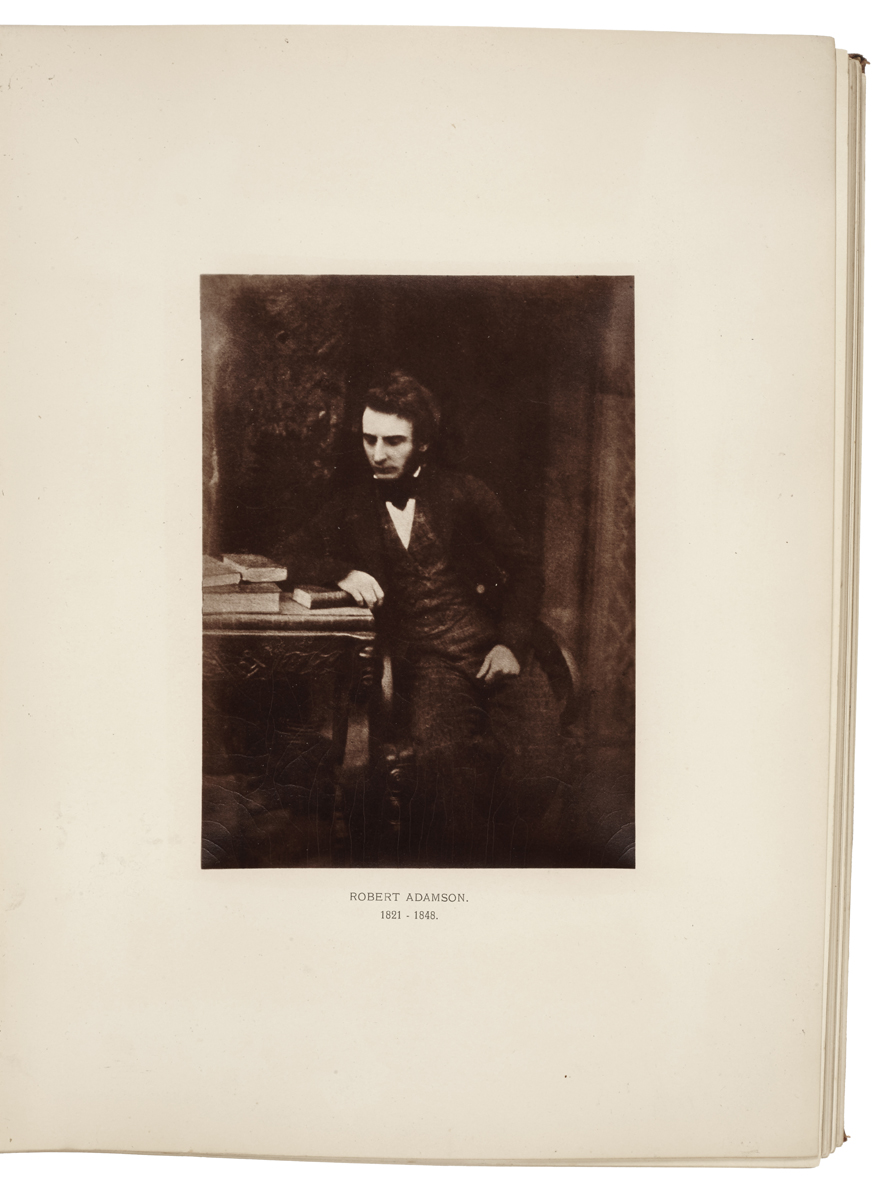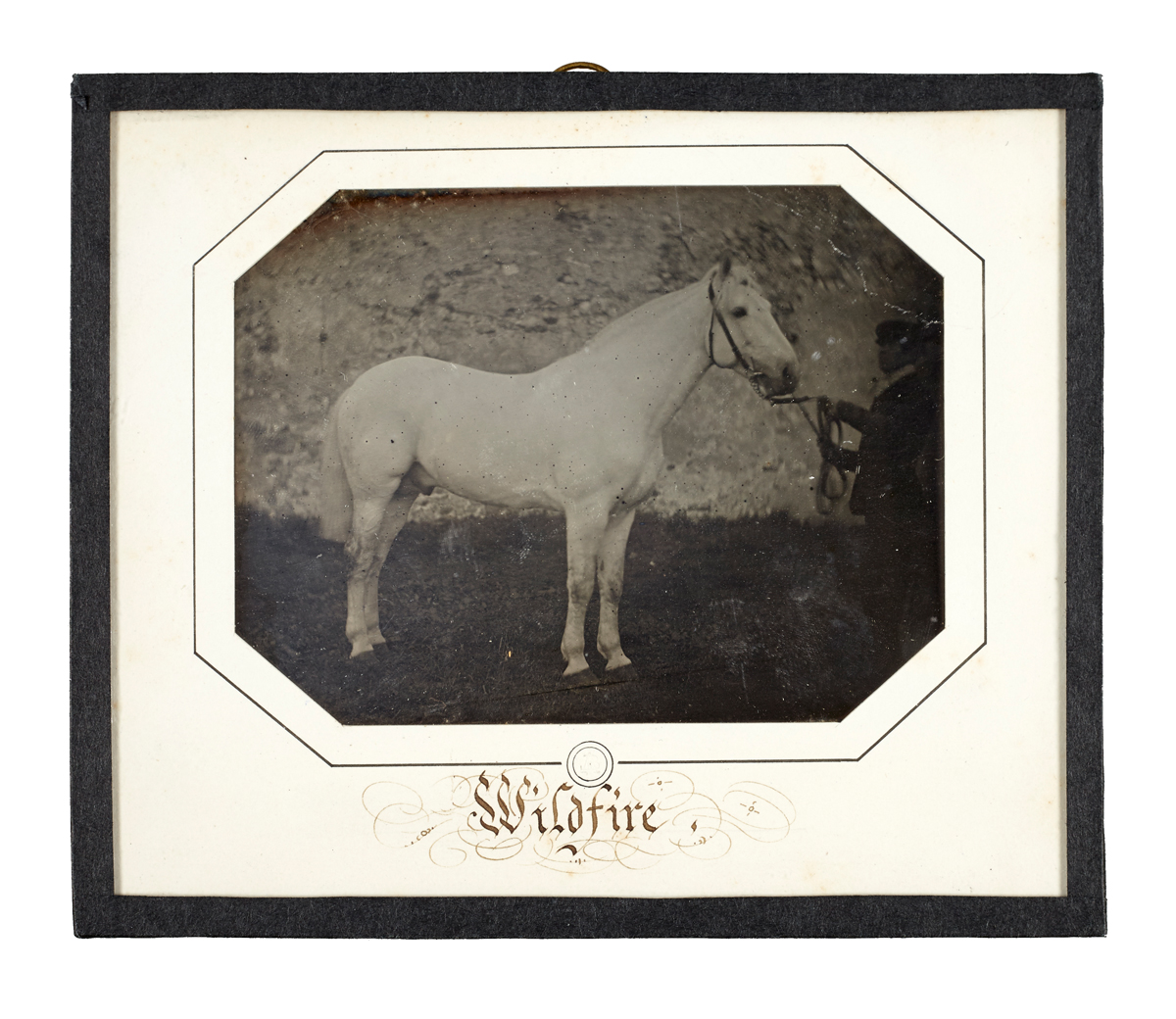







PRESENTED TO THE DIRECTOR OF THE NATIONAL GALLERIES OF SCOTLAND
[HILL & ADAMSON.]
ELLIOT, Andrew, and Dr Elliot; ANNAN, Thomas. Calotypes by D. O. Hill and R. Adamson Illustrating an Early Stage in the Development of Photography Selected from his Collection by Andrew Elliot. With a preface by John M. Gray, ‘The Early History of Photography’.
Edinburgh, Printed for Private Circulation, 1928.
Large 4to (14½ x 11 inches, 36.8 x 27.9 cm), pp. [viii], 120, [2 blank] with 47 carbon-print photographs all but one portrait of Hill from the original calotypes by Hill & Adamson, printed circa 1879–1881 by Thomas Annan, image sizes varying from 5¾ x 4⅜ inches (14.6 x 11.1 cm) to 10½ x 7¼ inches (26.7 x 18.4 cm), each with printed caption in margin, numbered 19 of 38 copies, ownership inscription of James L. Caw of Edinkerry, Lasswade in pencil on front free endpaper, printed note personally addressed to Caw from Dr A Elliot dated May 1929 to front pastedown, full red cloth, gilt titling to spine (pp. 59-62 misnumbered as 51-54 but with text complete, 21 prints showing degrees of the ‘craquelure’ effect typical of the prints in this publication, some foxing to endpapers, small tear to front free endpaper, hinge cracked, spine and extremities a little bumped and faded); a good clean copy of a rare and important book which struggled slowly to publication.

Added to your basket:
ELLIOT, Andrew, and Dr Elliot; ANNAN, Thomas. Calotypes by D. O. Hill and R. Adamson Illustrating an Early Stage in the Development of Photography Selected from his Collection by Andrew Elliot. With a preface by John M. Gray, ‘The Early History of Photography’.
First edition, one of 38 copies, of the first monograph on the pioneering Scottish photographers David Octavius Hill & Robert Adamson, fifty years in publication, sumptuously illustrated with carbon prints from the original calotype negatives.
The collector Andrew Elliot had originally conceived of the book and commissioned the illustrations in preparation for publication in the last quarter of the nineteenth century: ‘The artistic qualities of these pictures appealed to him strongly, and from his collection he had chosen a series of portraits which he considered to be of special merit or of special interest, with a view of issuing them in book-form, together with appropriate letterpress. At the time of his death this volume was almost ready for publication’. Much later the surviving sheets were reassmbled ‘to make the completion of a limited number of copies possible, and these are now issued in the hope that they may be of interest to those who were associated with my father in the preparation of the pages as well as to others who, like himself, have been attracted to the study of Photography in its early days’.
The introductory essay provides a historical context for Hill & Adamson’s work as well as a more detailed account of their range of subject matter and the characteristics of the calotype process. The selection of sitters, each with informative biographical text, includes Hill (by Thomas Annan, circa 1868), Adamson, Thomas Duncan RSA, Henning & Ritchie ARSA, Lady Ruthven (back view), the publisher John Murray, Lady Eastlake, David Roberts RA, Sir Willliam Allan PRSA and Sir Francis Grant PRA.
Provenance: Sir James Lewis Caw (1864–1950), art historian and watercolour painter, who became curator of the Scottish National Portrait Gallery in 1895 and was appointed the first director of the National Galleries of Scotland and the SNPG in 1907. ‘In his generation, Caw championed appreciation of Scottish art as an important expression of national identity. He was the first writer to document Scottish art in an intellectual and critical way and, above all, to celebrate it with pride rather than to apologize for it. His Scottish Painting, 1620–1908 (1908) and his publications on Sir Henry Raeburn (1901, 1909), William McTaggart (1917), Sir James Guthrie (1932), Allan Ramsay (1937), and Sir David Y. Cameron (1949) each became standard works of reference.’ (ODNB).
A full list of sitters is available on request.
